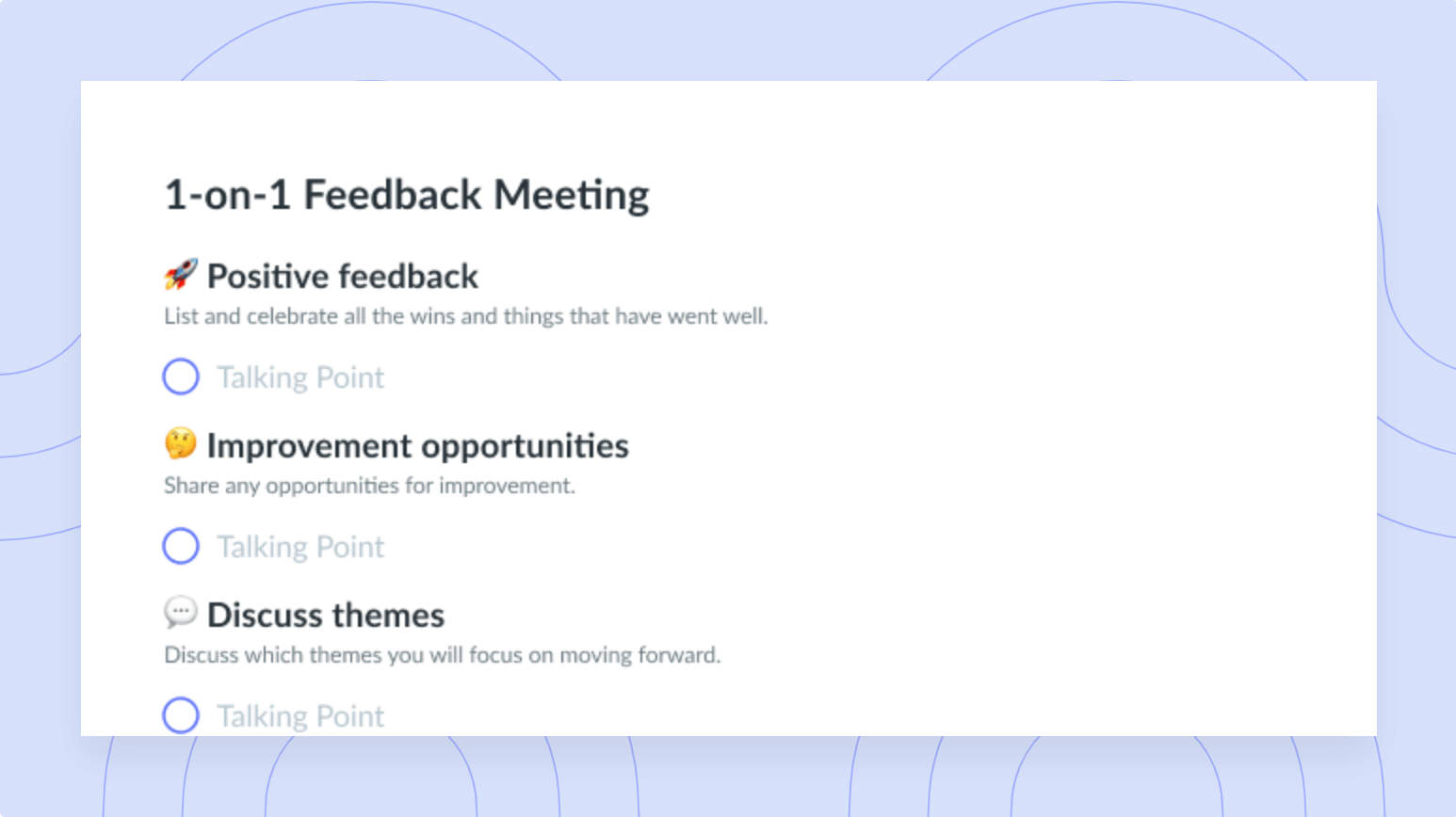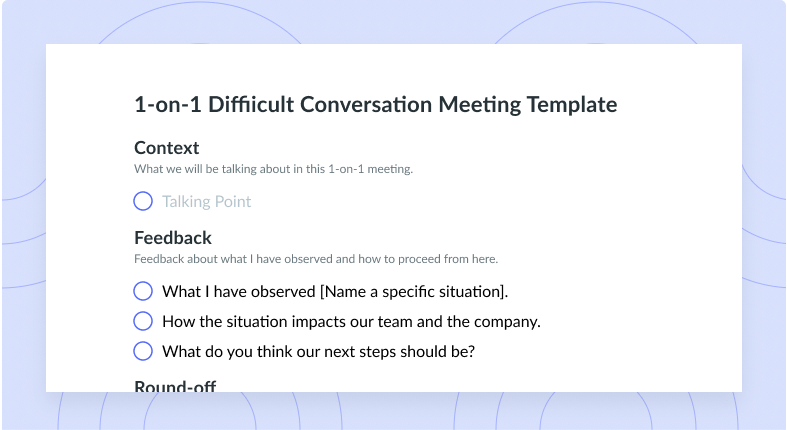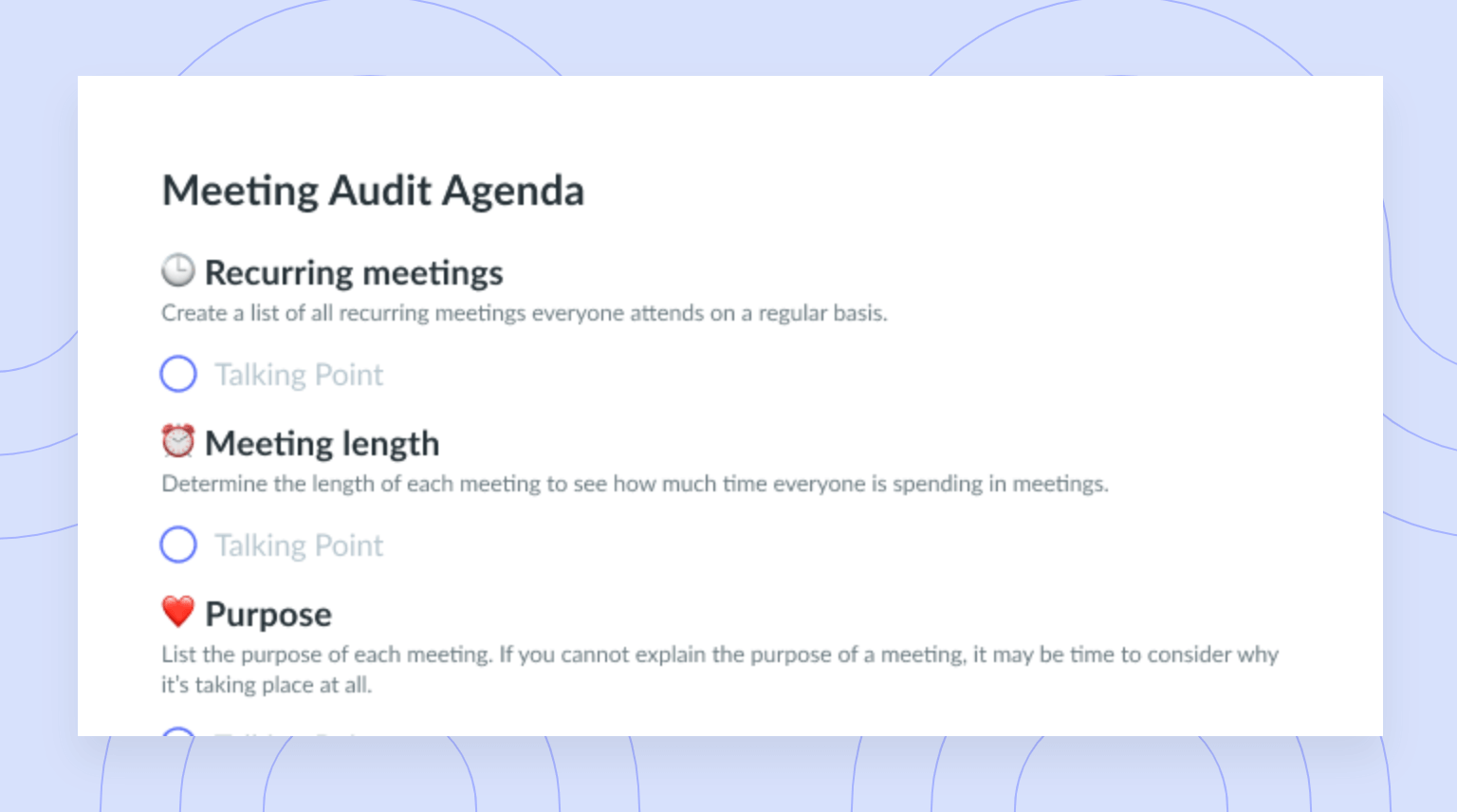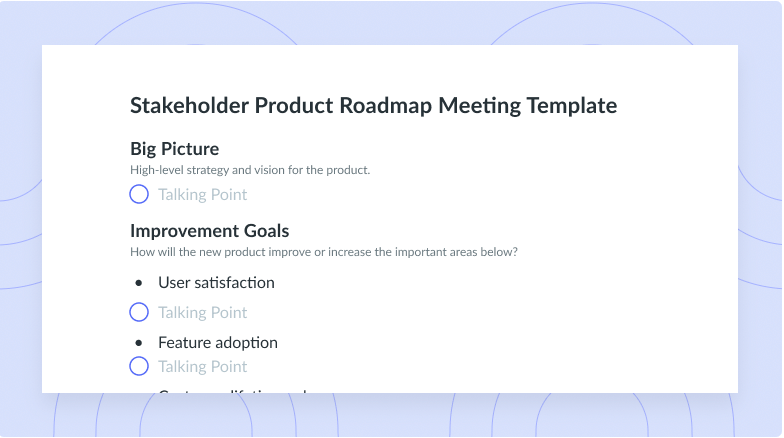4 Secret Ways to Weave Feedback Into Your Team’s DNA
Effective feedback is a must for building thriving companies. Learn how to foster a feedback culture—and take your team to the next level in the process.
Feedback is an essential part of any successful organization. But effective and impactful feedback doesn’t just happen spontaneously; if you want to leverage feedback to help your team (and yourself!) thrive, you need to create a culture where giving, receiving, and implementing feedback is part of the DNA.
But why, exactly, is fostering a feedback culture so important? How do you create a feedback culture? And how can you foster that culture to grow your team, improve your workflow, and take your entire organization to the next level?
- Why is fostering a feedback culture so important?
- How to foster a feedback culture
- Use feedback to improve your processes
Why is fostering a feedback culture so important?
Before we jump into how to create a culture that values feedback, let’s quickly touch on why fostering a feedback culture is so important.
The main reason: Effective feedback is a catalyst for positive change.
It can be difficult to see the areas we most need to work on. Effective and constructive feedback allows employees to understand how their work, performance, actions, and behaviors are seen and received by the rest of their team, which can give them the insights they need to improve and grow.
“Giving your employees an opportunity to understand how their work style and performance is perceived by the team as a whole sets them up for incredible growth,” says industrial-organizational psychologist and leadership coach Tianna Tye.
Effective feedback is not only a catalyst for change in individual employees — but it can also be a catalyst for positive change in your systems, processes, and workflows. By gathering feedback from your team on what’s working and not working, you can continually tweak and improve your workflows until your team is running at maximum efficiency.
How to foster a feedback culture (and take your team to the next level in the process)
Clearly, feedback is important. But how can you foster a feedback culture within your organization?
1 Show your team it’s safe to give and receive feedback—starting with you
Feedback shouldn’t be scary—but in many organizations, it is.
“People are less likely to give one another feedback if they don’t feel safe,” says organizational psychologist and executive coach Patricia Thompson, PhD. “If they’re concerned that their words will be held against them, or that they can’t ask questions or make mistakes, then it’s unlikely that open dialogue will occur.”
Part of fostering a feedback culture is creating a safe space for people to give and receive feedback. And creating that space starts with you.
“Managers can set the tone for a feedback-rich culture by modelling that they value feedback [for themselves],” says Thompson. “This means that they need to have a willingness to ask for feedback, and receive it in a non-defensive way.”
Once your team feels confident that you’ll take their comments and suggestions in a constructive way (instead of using it against them), they’ll feel much more comfortable sharing their honest feedback.
If you want your employees to feel safe when they’re on the receiving end of your feedback, it’s important to go into it with the right intentions—and, in particular, to avoid using feedback as an opportunity to point fingers.
In a 2015 article in the Harvard Business Review, executive coach Monique Valcour defines the elements of a high-impact feedback session, including:
“An intention to help the employee grow, rather than to show him he was wrong. The feedback should increase, not drain, the employee’s motivation and resources for change.”
When you show your team that giving and receiving feedback is nothing to be afraid of (by modelling it yourself!), you’ll create a culture where feedback flows freely—and your organization will thrive as a result.
2 Incorporate opportunities for feedback into your team’s day-to-day experience
Another way to foster a feedback culture? Normalizing feedback — and weaving it into the day-to-day operations of your organization:
- Don’t wait for a quarterly review to deliver feedback to an employee —instead, give them any comments or suggestions in real-time so they can implement your feedback and improve faster.
- Send a feedback request whenever you finish a project or collaboration. Ask the other person what you should continue doing and what could be improved the next time you collaborate on a similar initiative.
- Don’t wait a year after you’ve implemented a new software or process to get your team’s thoughts on it — ask how it’s working for them after a week, make any necessary changes, and follow up after 30 days.
- Send a feedback request after every virtual meeting, one-on-one meeting, or all-hands to find out how you can make the meetings more engaging and helpful to your team.
The point is, the more you integrate feedback into your day-to-day operations, the more you can use it to continually improve—and the better off your entire team will be in the process.
Just make sure that you don’t get so caught up in the day-to-day minutiae that you fail to get the feedback you need to improve your team, workflows, and organization through a more big-picture lens. In another article from Harvard Business Review, this one from 2017, Jennifer Porter, managing partner of leadership and team development firm The Boda Group writes:
“Leaders tend to get the most feedback on a specific event — how they communicated in one meeting or responded to one email. What is more helpful is feedback on patterns of behavior that leverage specific events as examples. Looking at patterns helps alleviate recency bias where we tend to recall and over-weight events in our near-term memory.”
3 Give your team the opportunity to deliver feedback anonymously
Direct feedback opportunities (like reviews, one-on-one meetings, or team surveys) can be a great way to gather feedback from your team. But some employees may struggle to be completely honest with their feedback in such direct situations.
“Whenever there is a perceived difference in power between people, communication tends to be filtered,” says David Chaudron, PhD, managing partner of Organized Change Consultancy.
Giving your team the opportunity to submit their feedback anonymously can help remove that filter, allowing them to speak more freely—and for you to get more honest, direct, and ultimately helpful feedback.
“If you want honest feedback from your team, one of the most effective methods is an anonymous survey,” says Tye. “Making the survey anonymous takes away some of the pressure from employees.”
4 Don’t just ask for feedback—implement it
As a manager, you need to ask for feedback. But asking for feedback is only the first step of the process—if you want that feedback to be a catalyst for positive change within your organization, you have to actually implement it.
“When you ask for feedback, you are not only creating an opportunity for people to provide it, you are also creating an expectation that you will actually do something with the feedback,” says Thompson.
When someone on your team gives you feedback, you need to show them that you take that feedback seriously; otherwise, they’re going to feel ignored—and they’re not going to feel confident giving feedback moving forward.
“When you solicit feedback, but do nothing to implement it, your team may feel understandably disappointed,” says Tye. “When this happens routinely, your team will stop giving you feedback altogether because they know nothing will come of it.”
When someone on your team delivers feedback (whether in a one-on-one, through a feedback request, or through an email), acknowledge it, ask any necessary questions to gain clarity on what they think you can improve or how they’d like to see things change, and let them know you’re going to do the work on your end to make that happen.
Now, there will be times when someone on your team has feedback that, for whatever reason, you can’t or won’t implement. In those situations, it’s better to be honest and let them know it’s not going to work.
“Be transparent if you genuinely aren’t sure whether you’ll be able to implement something organization-wide,” says Tye.
Use feedback to improve your processes, your workflows, your team, and yourself
Feedback is a key part of improving your processes, your workflows, your team, and yourself. And now that you know how to foster a feedback culture, all that’s left to do? Get out there and get the feedback you need to take your organization to the next level!




























